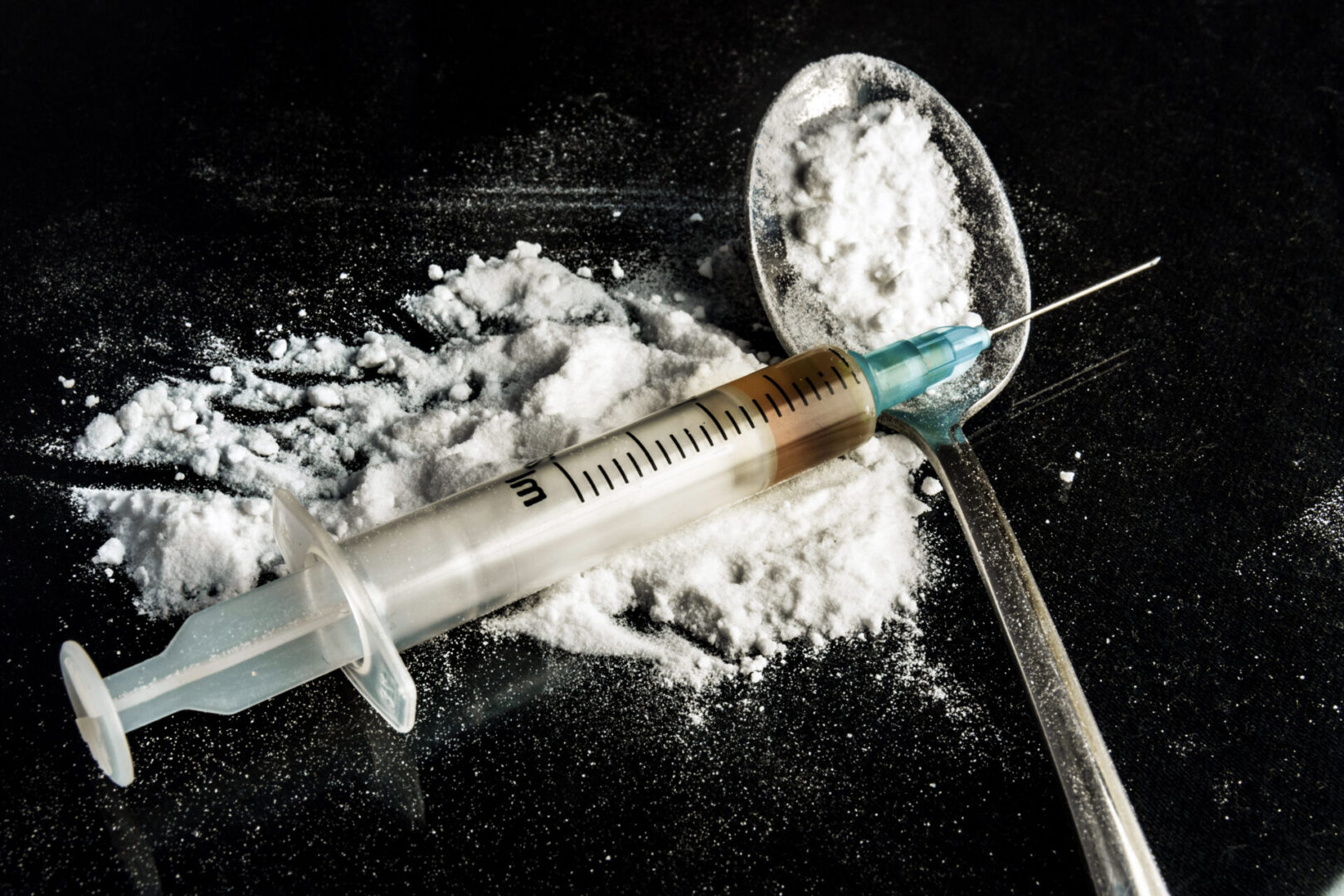ORANGE COUNTY DUI METHAMPHETAMINE DEFENSE ATTORNEYS
ORANGE COUNTY'S "BEST" OR "TOP-RATED" DUI DEFENSE LAWYERS RATED BY SUPER LAWYERS, ORANGE COUNTY'S "TOP-RATED" DUI DEFENSE ATTORNEYS
Essential Information About DUI Involving Methamphetamine
DRIVING UNDER THE INFLUENCE OF METHAMPHETAMINE - DUI METHAMPHETAMINE
Methamphetamine is a white, beige, or light brown crystalline powder, or clear chunky crystals. There are two types of methamphetamine; D- and L-. The D- type is the one used illicitly, which is commonly referred to as “street methamphetamine”. The L- type methamphetamine is commonly found in non-prescription inhalers has a different effect. The L- type of methamphetamine is also commonly found in weight-loss medications as well; but can have similar effects to “street methamphetamine” in some cases.
Most street methamphetamine is produced in secret, underground laboratories and is commonly referred to as “speed,” “meth,” and “chalk.” Methamphetamine hydrochloride is clear chunky crystals resembling ice and it is commonly referred to as “ice,” “crystal,” “glass,” or “tina” depending on who you ask.
Methamphetamine is a common basis for a DUI charge for two reasons. First, an emerging population of regular users of illicit methamphetamine continue to expand because it is typically cheaper than cocaine and more easily found. Second, methamphetamine intensifies, stimulates, and accelerates brain functions that can reduce the ability to drive safely. Drivers who take methamphetamine can experience extreme agitation, paranoia, or even extreme aggression and can often respond to everyday traffic conditions with erratic maneuvers that cause them to get stopped for suspicion of DUI Methamphetamine.

ORANGE COUNTY DUI METHAMPHETAMINE DEFENSE ATTORNEYS
If you were stopped for Driving Under the Influence of Methamphetamine, or DUI Methamphetamine, you need to have your case handled by a DUI Defense Lawyer who understands the not only the chemical composition of the substance, but who also understands the signs and symptoms of impairment. If you have been charged with DUI Methamphetamine, contact Peter F. Iocona and the DUI Defense Attorneys of The SoCal Law Network for a free consultation and case evaluation.
NHTSA DRUGS AND HUMAN PERFORMANCE FACT SHEETS
Methamphetamine (And Amphetamine)
Methamphetamine hydrochloride is a white to light brown crystalline powder, or clear chunky crystals resembling ice. Methamphetamine base is a liquid.
Synonyms
Methamphetamine: chalk, chrissy, crank, crystal, glass, go, hydro, ice, meth, rock candy, speed, whiz; Desoxyn®; Amphetamine: dextroamphetamine; Dexedrine®, Adderall®, Benzedrine®, DextroStat®, Biphetamine®, Gradumet®.
Source
The majority of street methamphetamine is produced in clandestine laboratories (e.g. reduction of l-ephedrine or d-pseudoephedrine over red phosphorus with hydroiodic acid, or reduction with sodium or lithium in condensed liquid ammonia). Methamphetamine remains concentrated in western U. S. states and some rural areas elsewhere. d-Methamphetamine is a schedule II controlled substance (Desoxyn®) available in 5 mg white, 10 mg pink, and 15 mg yellow strength tablets. Amphetamine is also a Schedule II controlled substance and is usually supplied as the sulfate salt of the d-isomer (Dexedrine®), or as the racemic mixture (Benzedrine®), or a mixture of the two (Adderall®). Dexedrine® is available in 5, 10, and 15 mg strength, orange/black capsules, or 5 mg tablets. Adderall® is available in 5, 7.5, 10, 12.5, 20, and 30 mg strength, blue or orange tablets.
Drug Class
CNS stimulant, sympathomimetic, appetite suppressant.
Medical and Recreational Uses
Medicinally, methamphetamine is used in the treatment of narcolepsy, attention deficit disorder (ADD), and attention deficit hyperactivity disorder (ADHD). Typical doses are 10 mg/day or up to 40 mg daily, and a course of greater than six weeks is not recommended. Methamphetamine is infrequently used in the treatment of obesity, overeating disorders, and weight loss due to its abuse potential. Amphetamine is also used in ADD, narcolepsy, and weight control. Recreationally, methamphetamine is abused to increase alertness, relieve fatigue, control weight, treat mild depression, and for its intense euphoric effects.
Potency, Purity and Dose: Purity of methamphetamine is currently very high, at 60-90%, and is predominantly d-methamphetamine which has greater CNS potency than the l-isomer or the racemic mixture. Common abused doses are 100-1000 mg/day, and up to 5000 mg/day in chronic binge use. Therapeutic doses of Desoxyn® are 2.5-10 mg daily, with dosing not exceed 60 mg/day. To treat narcolepsy, 5-60 mg/day of amphetamine is ingested in divided doses; and in ADD and ADHD doses of 2.5-10 mg/day is administered, depending on age.
Route of Administration
Methamphetamine users often begin with intranasal or oral use and progress to intravenous use, and occasionally smoking. In contrast to cocaine, the hydrochloride salt of methamphetamine can itself be smoked. Methamphetamine is used sometimes with alcohol or marijuana, particularly during the withdrawal phase.
Pharmacodynamics
Methamphetamine increases synaptic levels of the neurotransmitters dopamine, serotonin (5-HT) and norepinephrine, and has a and b adrenergic agonist effects. Norepinephrine is responsible for methamphetamine’s alerting, anorectic, locomotor and sympathomimetic effects; dopamine stimulates locomotor effects, psychosis, and perception disturbances; and 5HT is responsible for delusions and psychosis. Methamphetamine’s effects are similar to cocaine but its onset is slower and the duration is longer. Racemic amphetamine and d-amphetamine have similar chemical properties and actions to methamphetamine but are less potent.
Pharmacokinetics
Following oral administration, peak methamphetamine concentrations are seen in 2.6-3.6 hours and the mean elimination half-life is 10.1 hours (range 6.4-15 hours). The amphetamine metabolite peaks at 12 hours. Following intravenous injection, the mean elimination half-life is slightly longer (12.2 hours). Methamphetamine is metabolized to amphetamine (active), p-OH-amphetamine and norephedrine (both inactive). Several other drugs are metabolized to amphetamine and methamphetamine and include benzphetamine, selegeline, and famprofazone.
Molecular Interactions / Receptor Chemistry
Methamphetamine is metabolized to amphetamine via cytochrome P450 2D6. Potential inhibitors of the 2D6 isoenzyme could decrease the rate of methamphetamine elimination if administered concurrently, while potential inducers could increase the rate of elimination.
Blood to Plasma Concentration Ratio
0.65 (N=1)
Interpretation of Blood Concentrations
Blood concentrations can generally be used to distinguish therapeutic use from abuse. Concentrations of 0.02-0.05 mg/L are typical for therapeutic use, and up to 0.2 mg/L have been documented. Concentrations greater than this represent abuse. Concentrations do not disclose phase of use. Normal concentrations in recreational use are 0.01 to 2.5 mg/L (median 0.6 mg/L). Concentrations above this range will likely be associated with severe, possibly life threatening, toxicity. There is no evidence for improved performance in any task or test following use of doses greater than 40 mg (or concentrations greater than 0.2 mg/L).
Peak blood methamphetamine concentrations occur shortly after injection, a few minutes after smoking, and around 3 hours after oral dosing. Peak plasma amphetamine concentrations occur around 10 hours after methamphetamine use.
Interpretation of Urine Test Results
Positive results generally indicate use within 1-4 days but could be up to a week following heavy chronic use. Rate of excretion into the urine is heavily influenced by urinary pH. Between 30-54% of an oral dose is excreted in urine as unchanged methamphetamine and 10-23% as unchanged amphetamine. Following an intravenous dose, 45% is excreted as unchanged parent drug and 7% amphetamine.
Effects
Methamphetamine effects are less intense after oral ingestion than following smoked or intravenous use. Early phase – Psychological: Euphoria, excitation, exhilaration, rapid flight of ideas, increased libido, rapid speech, motor restlessness, hallucinations, delusions, psychosis, insomnia, reduced fatigue or drowsiness, increased alertness, heightened sense of well being, stereotypes behavior, feelings of increased physical strength, and poor impulse control. Early phase – Physiological: Increased heart rate, increased blood pressure, increased respiration rate, elevated temperature, palpitations, irregular heartbeat, dry mouth, abdominal cramps, appetite suppressed, twitching, pallor, dilated pupils, HGN at high doses, faster reaction time, increased strength, and more efficient glucose utilization. Late phase – Psychological: Dysphoria, residual stimulation, restlessness, agitation, nervousness, paranoia, violence, aggression, lack of coordination, pseudo-hallucinations, delusions, psychosis, and drug craving.
Late phase – Physiological: Fatigue, sleepiness with sudden starts, itching/picking/scratching, normal heart rate, and normal to small pupils which are reactive to light.
Binge use of methamphetamine can be broken down into the following phases: Rush – (5 minutes) intense euphoria, rapid flight of ideas, sexual stimulation, high energy, obsessive/compulsive activity, thought blending, dilated pupils; Shoulder –
(1 hour) less intense euphoria, hyperactivity, rapid flight of ideas, obsessive/compulsive activity, thought blending, dilated pupils; Binge use – (1-5 days) the drug is frequently readministered in an attempt to regain or maintain euphoria; Tweaking – (4-24 hours) dysphoria, scattered and disorganized thought, intense craving, paranoia, anxiety and irritability, hypervigilance, auditory and tactile hallucinations, delusions, and normal pupils; Crash – (1-3 days) intense fatigue, uncontrollable sleepiness and catnapping, continuing stimulation, drug craving; Normal – (2-7 days) apparent return to “normalcy” although drug craving may appear; Withdrawal – anergia, anhedonia, waves of intense craving, depression, hypersomnolence, exhaustion, extreme fatigue.
Side Effect Profile
Light sensitivity, irritability, insomnia, nervousness, headache, tremors, anxiety, suspiciousness, paranoia, aggressiveness, delusions, hallucinations, irrational behavior, and violence. In overdose, symptoms may include hyperthermia, tachycardia, severe hypertension, convulsions, chest pains, stroke, cardiovascular collapse, and possible death. Other common side effects following abuse of amphetamines include viral hepatitis, Sexually Transmitted Diseases (STDs), HIV, septicemia, abscesses, collapsed blood vessels, and malnutrition. Chronic abuse generally produces a psychosis that resembles schizophrenia and is characterized by paranoia, picking at the skin, preoccupation with one’s own thoughts, and auditory and visual hallucinations. Violent and erratic behavior is frequently seen among chronic abusers. Over time, methamphetamine appears to cause reduced levels of dopamine, which can result in symptoms like those of Parkinson’s disease.
Duration of Effects
Onset of effects is rapid following intravenous use and smoking, while effects onset more slowly following oral use. Overall effects typically last 4-8 hours; residual effects can last up to 12 hours.
Tolerance, Dependence and Withdrawal Effect
Methamphetamine has a high potential for abuse and dependence. Tolerance may develop and users may quickly become addicted and use it with increasing frequency and in increasing doses. Abrupt discontinuation of use can produce extreme fatigue, mental depression, apathy, long periods of sleep, irritability, and disorientation.
Drug Interactions
Phenobarbital, propoxyphene, phenytoin and MAOI’s slow the metabolism of amphetamines and increases their effect on the release of norepinephrine and other monoamines from adrenergic nerve endings. Amphetamines may counteract sedative effects of antihistamines. Methamphetamine may restore ethanol induced impairment in simple repetitive tasks of short duration, however, there is no restoration of ethanol-induced deficits of balance and steadiness. In general, high doses of amphetamines are likely to increase the impairing effects of alcohol. Chlorpromazine and haloperidol block dopamine and norepinephrine reuptake, thus inhibiting the central stimulant effects of amphetamines. Amphetamine potentiates the analgesic effect of meperidine.
Performance Effects
Laboratory studies have been limited to much lower doses than those used by methamphetamine abusers. Doses of 10-30 mg methamphetamine have shown to improve reaction time, relief fatigue, improve cognitive function testing, increase subjective feelings of alertness, increase time estimation, and increase euphoria. However, subjects were willing to make more high-risk choices. The majority of laboratory tests were administered 1 hour post dose. Expected performance effects following higher doses may include agitation, inability to focus attention on divided attention tasks, inattention, restlessness, motor excitation, increased reaction time, and time distortion, depressed reflexes, poor balance and coordination, and inability to follow directions.
Effects on Driving
The drug manufacturer states that patients should be informed that methamphetamine and amphetamine may impair the ability to engage in potentially hazardous activities such as driving a motor vehicle. In epidemiology studies drive-off-the-road type accidents, high speed, failing to stop, diminished divided attention, inattentive driving, impatience, and high risk driving have been reported. Significant impairment of driving performance would also be expected during drug withdrawal. In a recent review of 101 driving under the influence cases, where methamphetamine was the only drug detected, blood concentrations ranged from <0.05-2.36 mg/L (mean 0.35 mg/L, median 0.23 mg/L). Driving and driver behaviors included speeding, lane travel, erratic driving, accidents, nervousness, rapid and non-stop speech, unintelligible speech, disorientation, agitation, staggering and awkward movements, irrational or violent behavior, and unconsciousness. Impairment was attributed to distraction, disorientation, motor excitation, hyperactive reflexes, general cognitive impairment, or withdrawal, fatigue and hypersomnolence.
DEC Category
CNS stimulant
DEC Profile
Horizontal gaze nystagmus not present; vertical gaze nystagmus not present; lack of convergence not present; pupil size dilated; reaction to light slow; pulse rate elevated; blood pressure elevated; body temperature normal to down. Other characteristic indicators may include restlessness, body tremors, talkativeness, exaggerated reflexes, anxiety, and track marks or recent injection sites.
Panel’s Assessment of Driving Risks
At lower dose, amphetamines have few effects on cognitive functioning and may result in an enhancement of some psychomotor tasks, but risk-taking increases at higher doses and responses become inappropriate. Drug withdrawal could also lead to the impairment of psychomotor skills required for safe driving.
References and Recommended Reading
Baselt RC. Drug effects on psychomotor performance. Biomedical Publications, Foster City, CA; pp 30-5, pp 244-6;2001.
Forney R. Stimulants, drugs & driving, NIDA research monograph 11, ed by Willette, RE 1977:73-6.
Gygi MP, Gygi SP, Johnson M, Wilkins DG, Gibb JW, Hanson GR. Mechanisms for tolerance to methamphetamine effects. Neuropharmacol 1996;35(6):751-7.
Hurst PM. Amphetamines and driving. Alc Drugs Driv 1987;3(1):13-6.
Jerome L, Segal A. Benefit of long-term stimulus on driving in adults with ADHD. J Nerv Ment Dis 2001(1);189:63-4.
Logan BK. Amphetamines: an update on forensic issues. J Anal Toxicol 2001;25(5):400-4.
Logan BK. Methamphetamine and driving impairment. J Forensic Sci 1996;41(3):457-64.
Logan BK. Methamphetamine - Effects on Human Performance and Behavior. Forens Sci Rev 2002;14(1/2):133-51.
National Transportation Safety Board safety study: Fatigue, alcohol, other drugs, and medical factors in fatal-to-the-driver heavy truck crashes (vol I and II). Accession# PB90-917002, report# NTSB/SS-90/01/02, National Transportation Safety Board, Washington DC, 1990.
Perez-Reyes M, White WR, McDonald SA, Hicks RE, Jeffcoat AR, Hill JM, Cook CE. Clinical effects of daily methamphetamine administration. Clin Neuropharm 1991(4);14:352-8.
Physicians’ Desk Reference, Medical Economics Company, Montvale, NJ, 2002.
Smith DE, Fischer CM. An nalysis of 310 cases of acute high dose methamphetamine toxicity in Haight-Ashbury. Clin Toxicol 1970;3(1):117-24.
Website: NHTSA DRUGS AND HUMAN PERFORMANCE FACT SHEETS – METHAMPHETAMINE
Orange County DUI Attorneys Providing DUI Defense in Orange County - Laguna Hills, Laguna Beach, Orange
CALL NOW!
FREE CONSULTATION: (949) 235-2250



